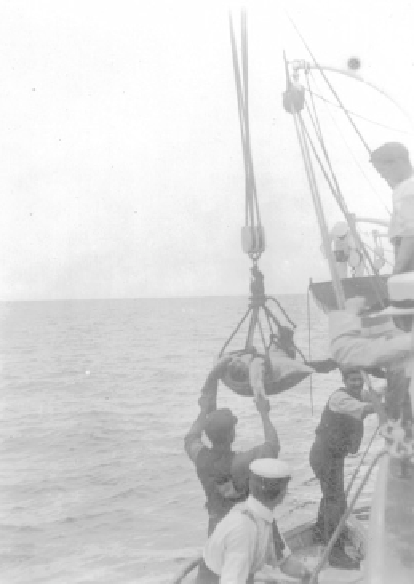Geoscience Reference
In-Depth Information
Figure 6.4
Loading a green turtle onto a boat using a winch, near Masthead Island, 1900s.
Australian Museum, Canberra
By the time of the Royal Commission enquiry into the pearl-shell and
bêche-de-mer
industries in 1908, commercial turtle meat and soup production
was regarded as a promising industry. Bowden, the pearl-sheller and merchant,
reported that turtle fishing could occur profitably alongside pearl-shelling,
although insufficient knowledge of curing methods could cause the turtle
meat to reach its destination in a poor condition (Mackay et al., 1908, p197).
Nevertheless, Bowden reported that he had invested significantly in the industry.
In addition, a merchant, Mackenzie, stated that he caught turtles and exported
their shells, calipee (flippers), calipash (breast meat) and fat to London; the latter
substance was used in soap manufacture. Mackenzie indicated that the problem
of preserving the turtle meat had been overcome by keeping the animals alive on
the decks of the ships. He reported that a turtle-tinning factory was operating at
Rockhampton and that another works was run by Skinner in Brisbane, but he
stated that the turtles he exported were obtained from Torres Strait rather than
from the southern fishing grounds (Mackay et al., 1908, pp128-9).
More systematic turtle harvesting, based on nesting turtles, commenced in
the Capricorn-Bunker Group in 1904 when Thomas Owens established a turtle

Search WWH ::

Custom Search